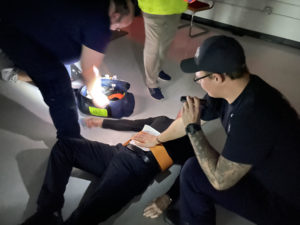Summa Health EMS RTF Program Trains for the Unthinkable
Rescue Task Force Training
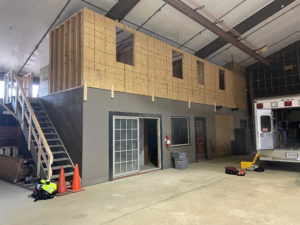
“We’ve created a model training program for responding to mass casualty incidents revolving around violent crimes,” said Dr. Gallo. “Specifically shooting rampages, like the Columbine or Newtown events.”
In recent months, he and his team of firefighter-EMS personnel have provided intensive, live trainings for Mass Casualty Incidents (MCIs) that include training for prehospital providers and importantly, for the emergency medicine residents, in the creation of RTF teams designed to immediately respond to MCI events, particularly mass shootings. All EM residents at Summa Health System at the Akron Campus in Northeast Ohio participated in this program.
As part of the Pre-Hospital Care Committee for the USACS National Clinical Governance Board, John Casey, DO, MA, FACEP, is excited by the work that Dr. Gallo is doing – and the experience it is providing to residents.
“Dr. Gallo is a very experienced EM physician, and we’re thrilled to have him work with our residents to train the next generation of physicians. He works with a lot of sites and models really strong working relationships with Emergency Medicine Services. Not a lot of places offer this, but because of this collaboration, our residents can learn from this and take the experience with them wherever they go,” he said. “Tactical medicine is one of the sub-disciplines of emergency medicine, and it’s a great way to get hands-on experience. Many of us are passionate about working with paramedics and crews, and this kind of service brings us closer into the communities we serve, giving us the ability to make healthcare better for our community as a whole.”
Response to National Tragedies
The trainings have evolved as a response to tragedies nationwide and allow first responders and the medical community to start caring for patients hours earlier than was previously possible under the traditional “5C’s” doctrine. This time savings could potentially translate into many lives saved.
“There’s now so much data on frighteningly ‘common’ mass shooting events that we’ve learned new ways to best approach these events, and critically, that the RTF can’t afford to wait to treat gunshot victims.”
Aiding the Wounded
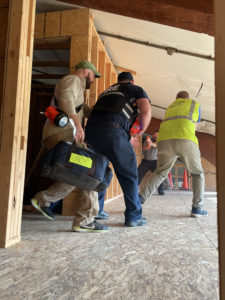
First, the initial set of police officers enter the scene, and in some cases literally step over the injured, in an effort to find and neutralize the perpetrator, who can create m
ore victims by the minute.
The second step is for the next wave of responding officers to link up with paramedics on the scene. Law enforcement flanks a pair of paramedics in a sort of armored bubble – there’s an officer in front, and an officer in back. The unit moves together, with police standing guard for the medics in case the perpetrator enters the warm zone unexpectedly and threatens the paramedic team.
The training incident zones are divided using the Tactical Emergency Casualty Care (TECC) methodology, which itself was adapted from the US Military’s Tactical Combat Casualty Care (TCCC). The hot zone is where the perpetrator(s) are actively exchanging fire with law enforcement; the warm zone is where the RTF operates – the perpetrator is nearby, but the RTF’s police officers provide cover and protection for the medics while they treat patients/provide indirect threat care. The cold zone is the “safe zone”, well away from any danger, where EMS is able to perform any intervention they normally would on a non-violent call.
“Previously, medics were staged potentially miles away and could not access the patients on-scene for hours, but in this training scenario, they are sent into the warm zone to get to the victims much sooner to try to save more lives,” Dr. Gallo explained. “Medics aren’t even performing many of their normal interventions – it’s lifesaving efforts only, like opening airways, applying CAT tourniquets and chest seals, performing needle thoracostomies – saving people who are at risk of dying within as little as three minutes. They’re instructed to only spend about 30 seconds per patient, so as to maximize survivability for the greatest number of victims possible. They don’t extricate anyone to the cold zone until they run out of patients or supplies, and then once they get them there, they have access to all of their “traditional” paramedic interventions.”
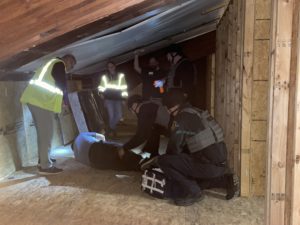
Dr. Gallo explained why: “The paramedics are unarmed because A) It causes role confusion, B) risks inadvertent crossfire, C) maintaining proficiency and qualifications would pose a significant challenge, D) interferes with their ability to provide patient care and E) legal stipulations in the State of Ohio”. This renders the medics literally unable to shoot back if fired upon – they must trust completely in their police escort. This is a big part of why forming an RTF is voluntary for a given agency.”
Priority: Delivering Medical Care
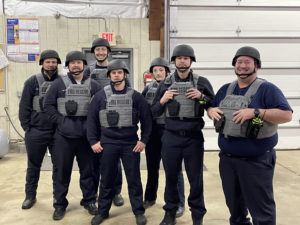
Dr. Gallo said that the EM residents who participate in the training scenarios do so as part of their EMS education, which runs longitudinally throughout their three-year EM residency. All EM residents within Summa participated in the RTF training scenarios.
After the trainings, Dr. Gallo debriefs with the medics and/or EM residents, discussing what interventions they chose to use and why, then discusses what care would be rendered next once the patient arrived in the emergency department.
“It’s a lot of planning, time, and effort for something I sincerely hope we’ll never have to put into practice,” Dr. Gallo said. “But if we do need to, we’ll be ready.”


